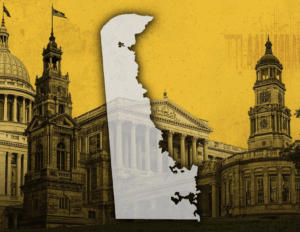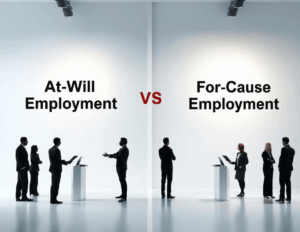Businesses owners and their teams are facing fresh privacy puzzles every day. AI is changing how we make decisions, connected gadgets are gathering more information than ever, and blockchain and web3 are flipping the ideas of trusted systems and the need for intermediaries on their heads. These innovations promise otherworldly advantages for those that adopt early and adopt thoughtfully, but they also come with new risks that require smart legal thinking.
One of the largest existential questions facing AI’s rapid adoption is the sheer volume of data that these systems are trained on and gather from their users. These systems learn from incomprehensibly large repositories of data, some of which can unfairly target certain groups of people if we’re not careful. And because so many AI tools work like locked, windowless boxes, it can be hard to explain how they reach conclusions. Much like in the human brain, individual neurons or lines of code maybe understood, and clusters of neurons and sections of codes’ general purpose vaguely grasped, the whole is beyond. Nonetheless, it works. That makes it tough to answer questions from regulators or defend against claims that an algorithm treated someone unfairly. On top of that, hackers have shown they can trick AI into revealing bits of its training data or feed it malicious inputs to break its predictions.
The Internet of Things and digitally connected devices bring their own set of challenges. Smart home gadgets, fitness trackers, even sensors in factories collect constant streams of data about our habits, movements, and environments, but if those devices aren’t built with security and privacy in mind, they become easy targets for those hunting for treasure troves of personal data. A single compromised camera or sensor can be the entry point into a whole corporate network, exposing sensitive information without anyone noticing. And when these networks are able to tie together data from many devices, you can create a detailed portrait of someone’s daily life. These risk make it clear that companies need actionable plans for how much data they really need to keep, and for how long.
Blockchain seems like an ideal privacy tool at first glance. Once data is on the chain, it can’t be changed, and that gives a strong sense of security and transparency. But that immutability clashes with privacy laws like GDPR and CCPA that give users the right to have their data erased. If you’ve ever written personal details onto a public ledger, you can’t simply delete them, and that may put you at odds with laws like GDPR. Addresses on many blockchains are only pseudonymous. With the right detective work, those addresses can often be linked back to real identities. And when smart contracts pull in outside data through oracles, a breach in that connection can leak personal information right back into the chain. However, further advances in blockchain technology like zero-knowledge proofs and blind computation are furthering the cypherpunk vision of a privacy-focused future.
Regulators are racing to keep up while innovation continues to race full speed ahead. In Europe, the GDPR still sets the gold standard for data protection, and lawmakers are working on new rules to manage AI under a risk-based system with the EU’s AI Act. In the U.S., states continue to pass broad privacy laws, and you still have sector-specific rules that cover health information and educational and financial data. Around the world, Brazil, India, and others are rolling out their own variations. Any international operation has to juggle all these different rules and the privacy frameworks of multiple jurisdictions.
The best way to deal with these challenges is to bake privacy into every project from the start. Before you deploy an AI system, run a data impact review, look for potential biases, and find ways to anonymize or pseudonymize information. For IoT, pick devices that meet industry benchmark security standards, segment your networks, and set up reliable update processes. And with blockchain, keep personal data off-chain whenever you can, using on-chain references or permissioned networks for sensitive cases incorporate zero-knowledge proofs and blind computation wherever possible, and define strict rules for how oracles work.
Legal teams should work closely with IT and business units to draft clear agreements for data handling. Those contracts need to spell out who’s responsible if something goes wrong and give you audit rights. Certifications like ISO 27701 show you’re serious about privacy, and regular training makes sure everyone knows how to spot and respond to incidents.
Looking ahead, these technologies will start to blend together. Imagine cutting-edge devices running AI models, sharing results across decentralized networks. This blurring of lines between where one system ends, and another begins will necessitate the need for even more nuanced legal advice. Law firms that really get the technical side of algorithms, distributed ledgers, and interconnected sensors will be in the best position to guide their clients.
At the end of the day, you don’t have to see AI, IoT, and blockchain as privacy nightmares. With the right mix of planning, contracts, and security, you can harness their power safely. Treat privacy as part of your strategy and you’ll build trust with customers and regulators, and gain an edge in a marketplace where ethical data use is more important than ever.




